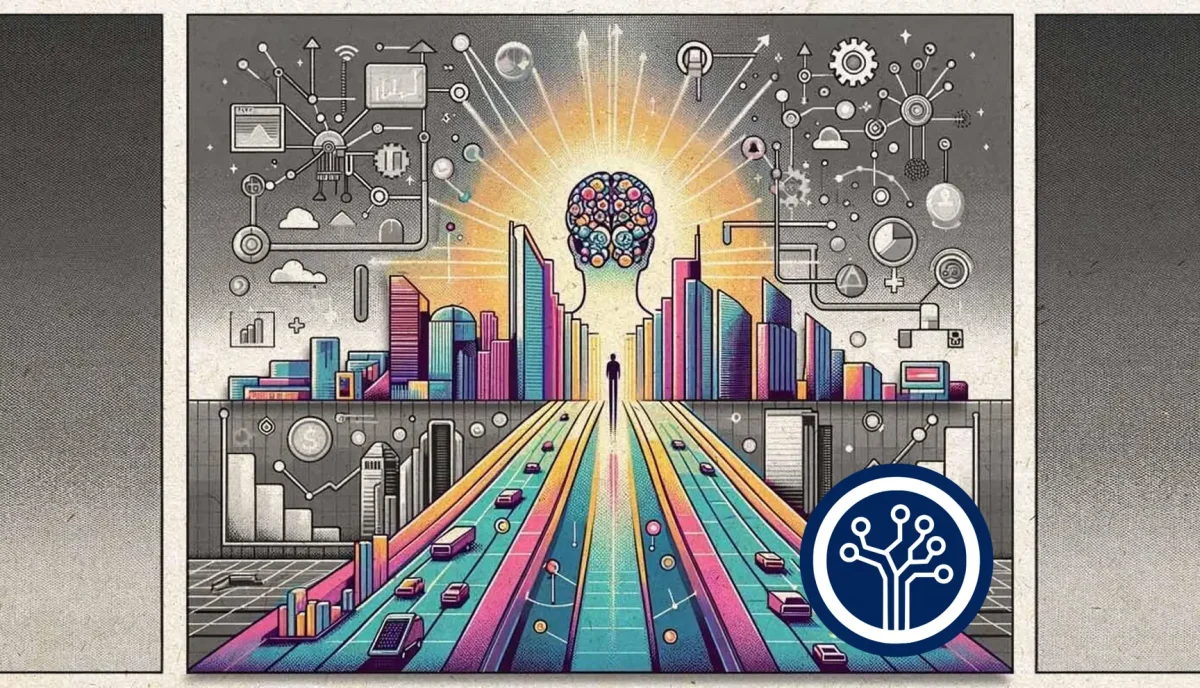Investors love technological revolutions. They believe there are ocean swells of money to be made on the huge, disruptive tide of innovation they bring, and in the calmer waters of adaptation and integration that follow. And many suspect that’s what is happening now, with the emergence of AI.
Economist Carlota Perez has spent a career studying these giant waves: this post is about why she thinks otherwise.
(To have this post read to you, click here)
What defines technological revolutions?
Tech revolutions are almost invariably marked by two clear stages, that together take over a half-century to play out, separated by a crucial intermission when everything changes.

Act one is the installation phase. It all begins with the launch of a tech innovation that redefines the possible, setting the stage for widespread transformative change. During this phase – which historically lasts 20 to 30 years – groundbreaking technologies disrupt the status quo, establishing new industrial frameworks and infrastructures.
Fueled by speculative investments, this phase is a gold rush, with money pouring into emerging technologies based on what could be – rather than what is. As these technologies begin to take root, they challenge existing economic and social structures, leading to the creation of new markets but also to bubbles that reflect the volatile relationship between tech innovation and financial markets.
The societal impact is significant too, with these disruptions often leading to changes in employment patterns and widening socioeconomic disparities. This is a phase of creative destruction and polarization.
Intermission is the turning point. This is a pivotal moment, triggered by the collapse of speculative bubbles and ensuing economic downturns.
It’s characterized by instability, uncertainty, deskilling, social unrest, and populism, and it frequently demands a significant shift in market strategies and governmental policies. But this isn’t the end – it’s a crucial switch from a speculative frenzy to a focus on sustainable growth and technological integration. It serves as a societal wake-up call, highlighting the need for adaptation and recalibration through regulatory changes and shifts in societal perspective.
The turning point can be very short or very long, and can involve multiple bubbles and crashes.
Act two is the deployment phase. This is where the fruits of the technological revolution truly begin to manifest. This 20- to 30-year phase sees the previously speculative technologies woven into the fabric of everyday life (and into the core of economic activities).
The focus becomes less about investing in the tech and more about using it to drive economic growth, productivity, and societal improvement. Government policies also play an important role, crafting an environment that supports the diffusion of technological benefits across all sectors of society. The economic landscape undergoes a profound transformation too, with new industries emerging and existing sectors innovating to incorporate new technologies, leading to job creation, better living standards, and potentially more equitable access to its benefits.
And this continues until the technology reaches maturity, and a new tech innovation bursts onto the scene to start the cycle again. This is a phase of creative construction, where almost everyone wins.
The last five major revolutions
Given they occurred over the past 250 years, they are not frequent.
The first one, the industrial revolution, began around 1771, laying the foundations for modern manufacturing and transportation. Next up, the age of steam and railways started in 1829, fueling massive changes in travel and goods transport. The age of steel, electricity, and heavy engineering kicked off in 1875, bringing electrification and advanced engineering marvels. The age of oil, the automobile, and mass production turned its ignition in 1908, revolutionizing personal mobility and manufacturing efficiency. Finally, the age of information and telecommunications (ICT) booted up in 1971, fundamentally changing how we communicate, work, and access information.

Despite all the hype about AI, Perez says it’s not the start of a sixth technological revolution. Sure, AI’s revolutionary (and it’s a technology), but that doesn’t make it a technological revolution.
According to Perez, “no single technology, however powerful, can propel a long-term upsurge in development”. In other words, technological revolutions are about more than tech: they’re part of bigger, interrelated constellations of innovations that collectively transform economies, governments, and societies.
Perez says we’re still in the midst of the information and communications technology revolution – which began in the 1970s with the introduction of personal computers and microprocessors and was followed by the widespread adoption of the internet. And AI is likely to be a critical milestone in that revolution, with its huge potential (hopefully) propelling it to its next stage: the golden age of the deployment period.
And that’s what’s so interesting about this moment in time: it suggests the world has been stuck at an intermission turning point since the first decade of this century – some 20-plus years – with the dot-com crash and global financial crisis not shaking things up quite enough to change societal mindsets from quick-buck investments to the real deal of long-term growth.
Perez says transitioning to the deployment phase won’t be a walk in the park: it’ll have to follow deeper changes to society (like market-shaping public policies that aim for broad-based social and environmental progress), to financial markets (so that they behave less like a casino), and to the environment (for the next phase to be sustainable). That’s a lot, so she doesn’t rule out the possibility that it could take a severe downturn and crisis to trigger those changes.
Why should we care?
There are two important takeaways for investors:
Bumps along the way are to be expected. A lot of people underestimate how volatile and complex technological revolutions are. They’ve historically brought economic recessions and market crashes, prompting policy changes that lead to a so-called golden age of broader prosperity. And their effects go well beyond financial wealth: they bring about periods of creative destruction, which reshape industries and job markets, and often lead to social changes and government interventions.
But there is a light at the end of the tunnel. The ride might not be smooth, but the destination – a golden age of technological, economic, and social advancements – is likely worth the turmoil. It at least offers some hope that many of the biggest challenges of our time – the modernization of institutions, including education and welfare – might be overcome. And it might not stop there: AI could also lay the groundwork for breakthroughs in biotech, nanotech, and other fields.
So there are plenty of reasons to be optimistic about our long-term future. And by being aware of the different phases, investors are better positioned to anticipate the risks and opportunities.


